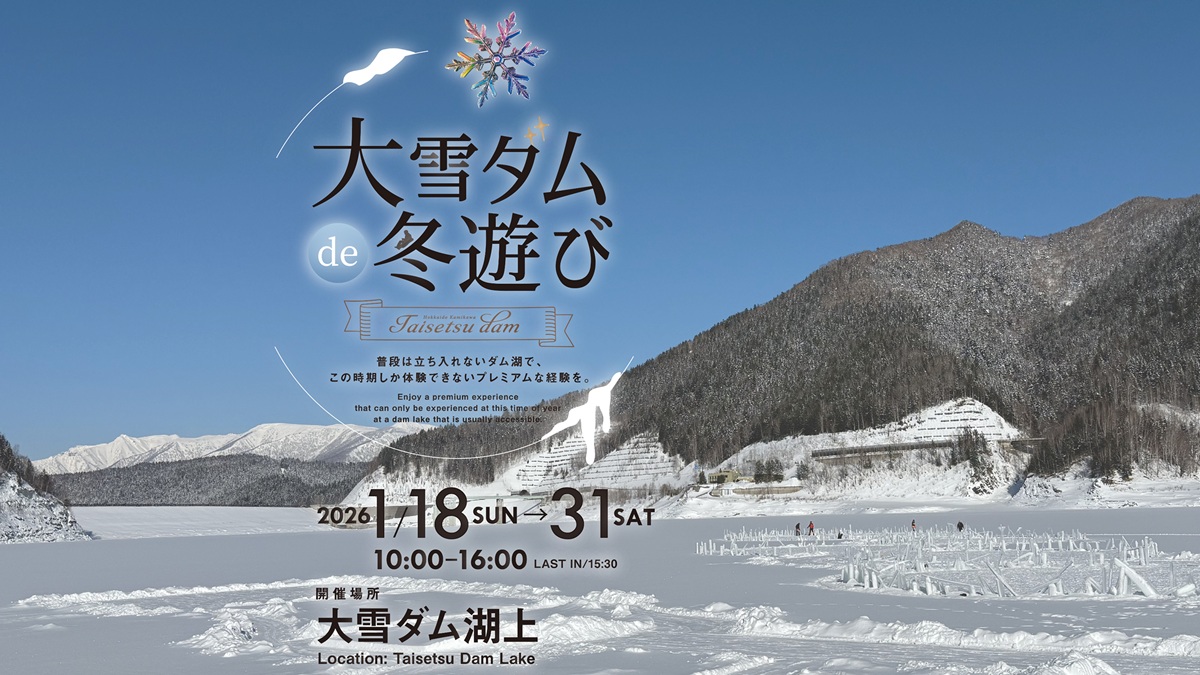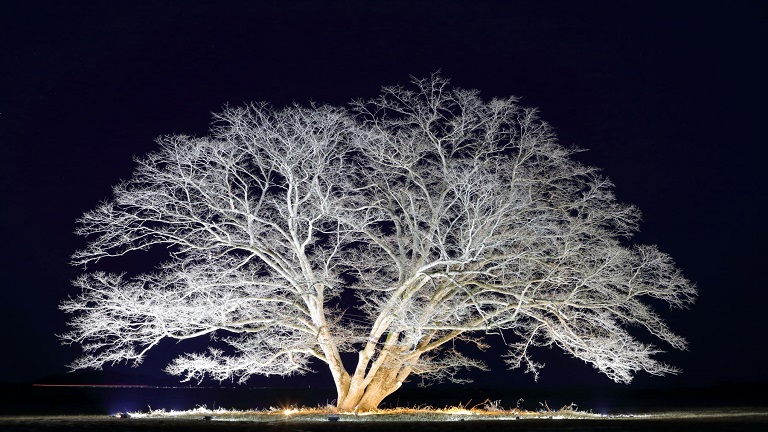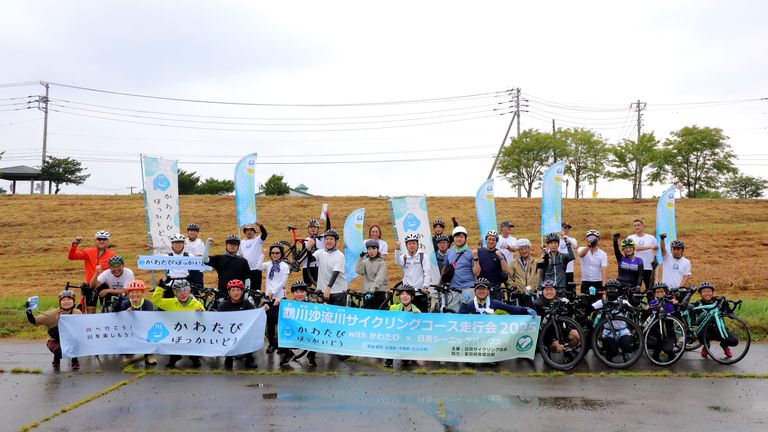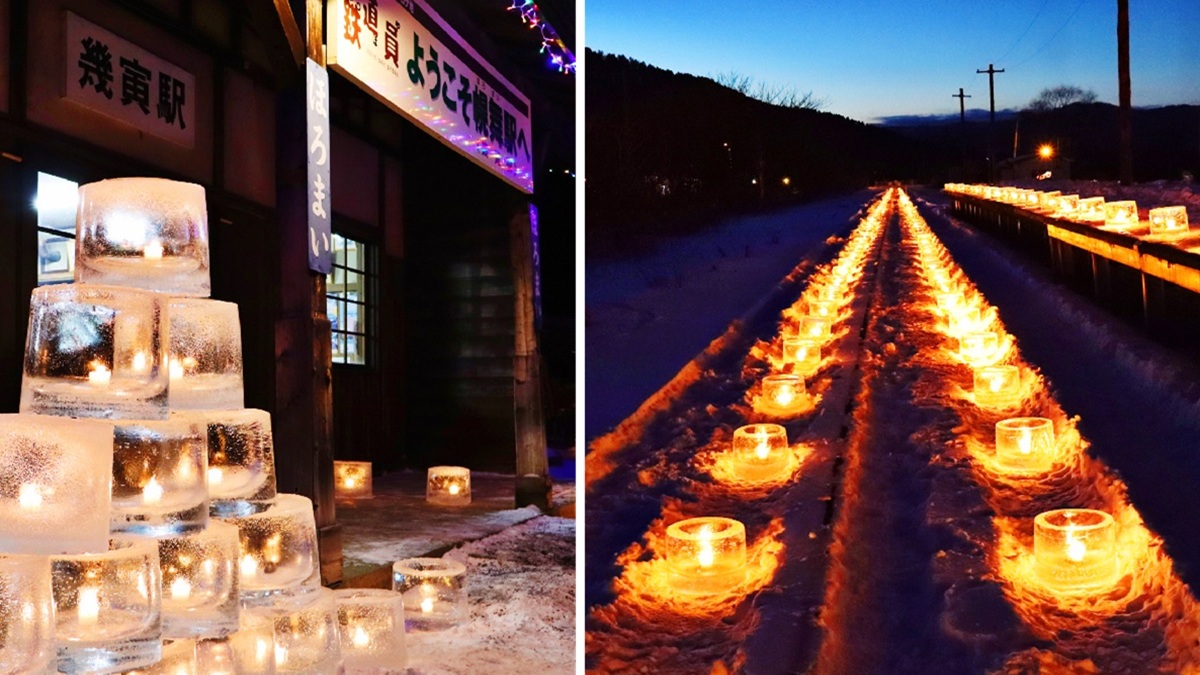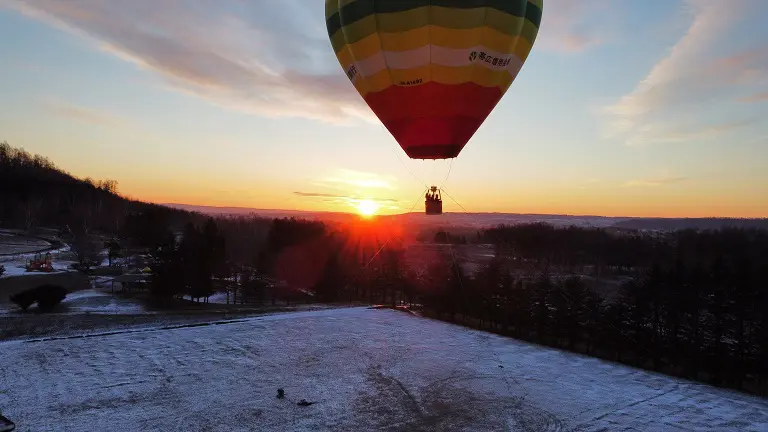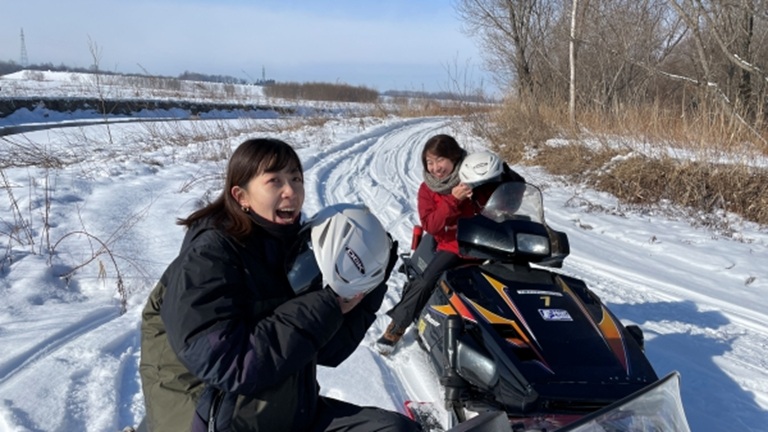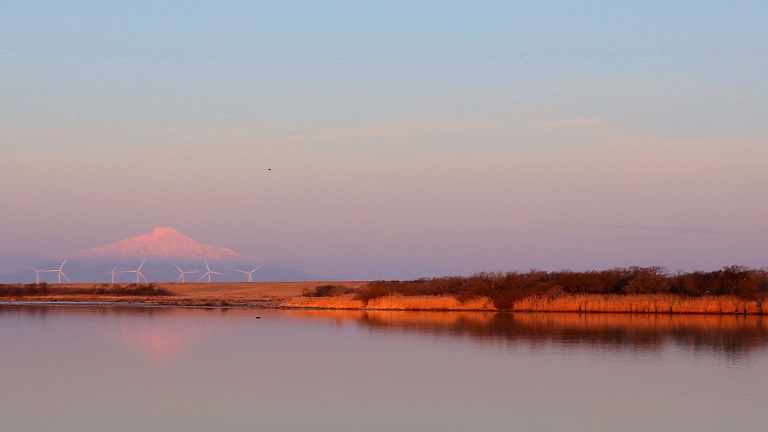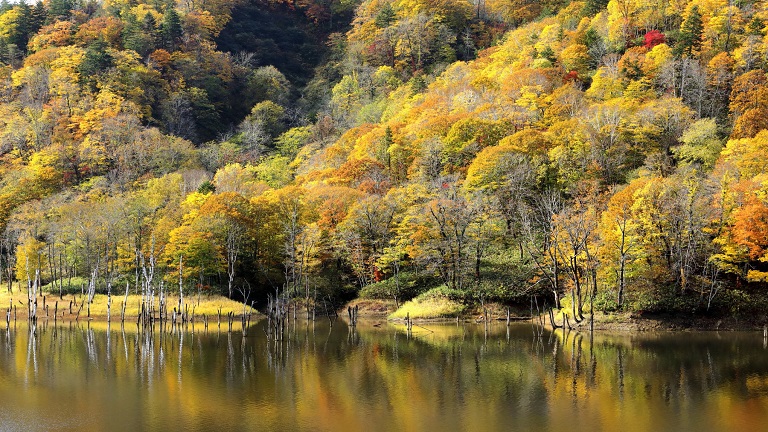The Mukawa River and the Saru River basins were also severely damaged by the “2018 Hokkaido Eastern Iburi Earthquake” on September 6, 2018. At present, all public utilities such as electricity and water have been restored, and local stores have resumed operations.
In addition to making donations to the affected areas, tourists can also support the recovery by visiting the area. Why don’t you take a trip along the Mukawa River and the Saru River?
Some sections of the route may be closed to traffic. Please contact the local government for the latest information.
Table of Contents
1 What Are the Mukawa River and the Saru River?
2 What Are the Current Conditions of the Mukawa River and the Saru River?
3 Let’s Travel Along the Mukawa River!
3-1What Kind of River is the Mukawa?
3-2Check Out Must-See Sights of the Mukawa River Basin!
4 Let’s Travel Along the Saru River!
4-1What Kind of River is the Saru River?
4-2Check Out Must-See Sights of the Saru River Basin!
What Are the Mukawa River and the Saru River?
The Mukawa River and the Saru River are two class A rivers that run through the Iburi region in southern Hokkaido. The Mukawa River and the Saru River have long been called “Fufu Gawa(husband and wife rivers),” and a unique culture with Ainu traditions has been fostered in the area. Mukawa Town and Shimukappu Village are located in the Mukawa River basin. Biratori Town and Hidaka Town are located in the Saru River basin and damaged by the Eastern Iburi Earthquake.
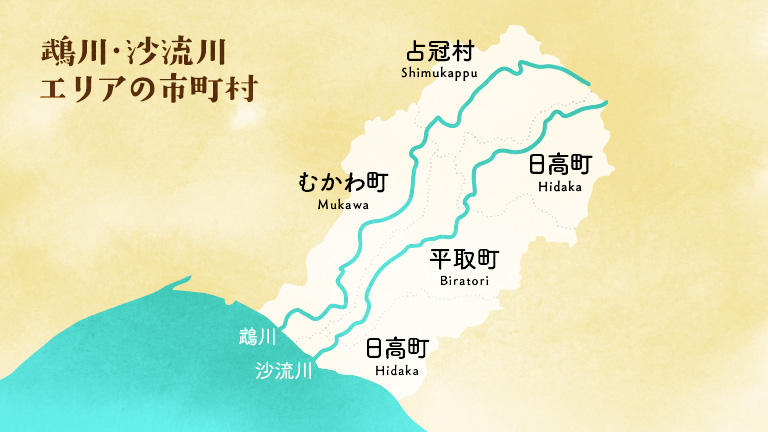
What Are the Current Conditions of the Mukawa River and the Saru River?
The power and water outages that occurred immediately after the earthquake have all been restored.
Please check the following website for the latest safety information due to weather and other factors.
⇒Hokkaido Safety-travel Information (external site)
Let’s Travel Along the Mukawa River!/h2>
What Kind of River is the Mukawa?
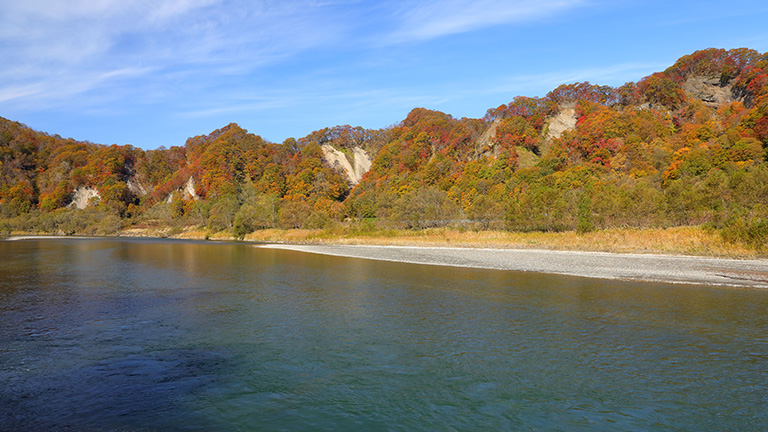
Blessed with a rich natural environment, the Mukawa River has long been known as a “river of bountiful catches,” with many shishamo smelts and salmons being caught downstream. In Shimukappu Village in the upper reaches of the river, there are tourist attractions such as the Hoshino Resorts TOMAMU.
Check out Kawatabi Hokkaido’s articles!
⇒[Rivers and dams in Hokkaido]Mukawa River
Check Out Must-See Sights of the Mukawa River Basin!
The Fishing Season for Shishamo Smelt Opens on October 1
Let’s Enjoy a Variety of Dishes That Can be Eaten Because It Is a Production Area!
【Shishamo Smelt】
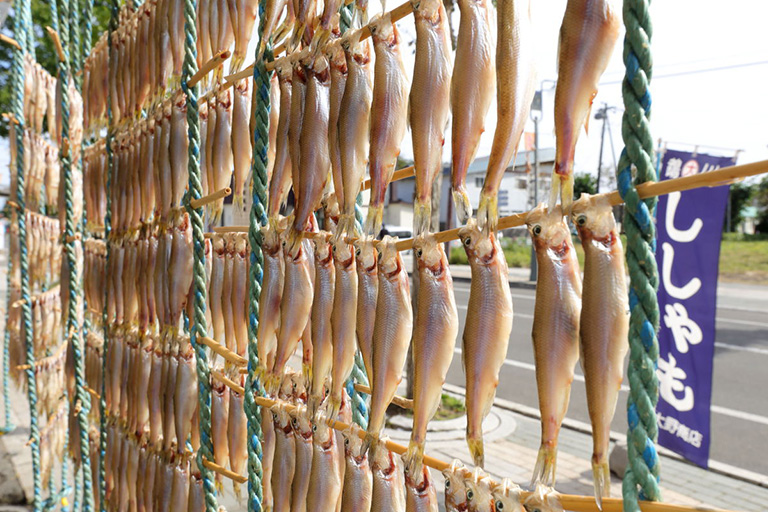
Mukawa Town’s specialty is shishamo smelt, and the ban on fishing for shishamo smelt was lifted on October 1. In 2018, the landings were higher than usual (according to the town’s website). “sudareboshi” the drying of shishamo smelt by hanging them from the eaves of houses has become a feature in Mukawa Town. Every autumn, the Mukawa Shishamo Festival is held here.
Mukawa Town Tourist Association
TEL 0145-47-2480
⇒Mukawa Town Tourist Association Facebook (external site))
Check out Kawatabi Hokkaido’s articles!
⇒秋のむかわ町でししゃも焼きや天ぷら、お寿司を堪能しよう!
More Than 100 Species of Wild Birds Fly in, Including White-Tailed Eagles and Steller’s Sea Eagles
【Mukawa River Estuary Tidal Flats】
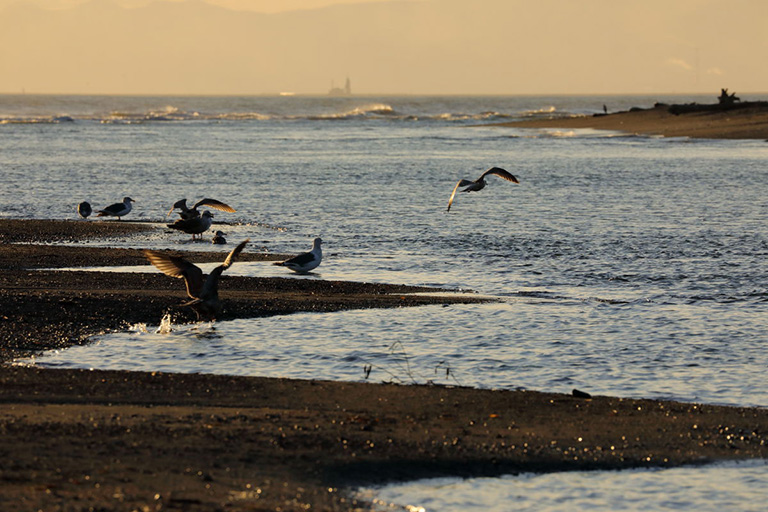
The tidal flats at the mouth of the Mukawa River are one of the most important staging grounds for migratory birds, especially snipes and plovers, in Japan. Snipes and plovers are migratory birds that travel between Siberia, Southeast Asia, and Oceania, and as they travel extremely long distances, they require resting and feeding areas.
The mouth of the Mukawa River, located at the confluence of the Sakhalin and the Chishima Islands routes, is easily spotted from the air and has an abundance of ragworms (benthos) as food, so many migratory birds rest their wings here. As a result, many bird lovers visit the area and enjoy bird-watching.
A Reconstructed Specimen of a Plesiosauria Discovered in Mukawa Town Is on Display
Let’s Learn About Prehistoric Mukawa Town!
【Hobetsu Museum】
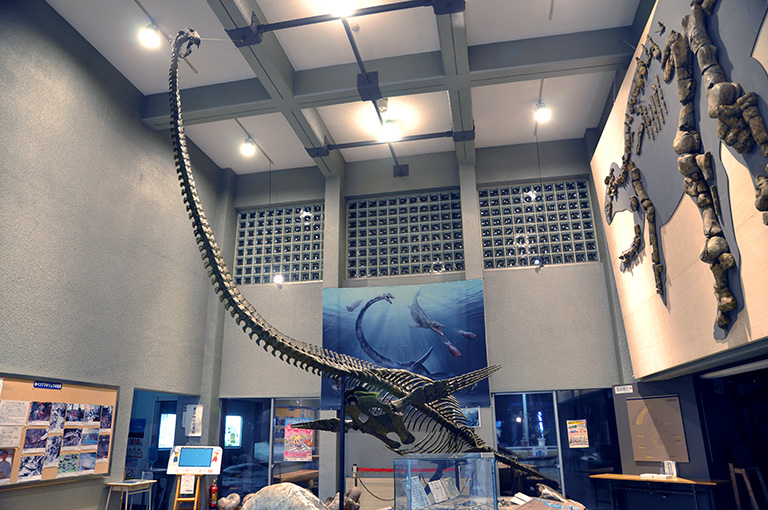
The exhibit reopened on September 30, 2018!
This is a history museum established to preserve and display the fossil of the Hobetsu-Araki-Ryu, a Plesiosauria excavated in 1977. Focusing on fossils produced in the Hobetsu area of Mukawa Town, the museum displays Plesiosauria, Mosasaurs, Ammonites, and Inoceramus that lived in the late Cretaceous period of the Mesozoic Era (the strata distributed in the Hobetsu area are about 100 million to 70 million years old).
Click here for access information and contact details.
⇒Japan’s largest whole-body skeletal dinosaur!In Hobetsu Museum you can meet Mukawa dinosaur.
It Is Also a Popular Spot for Rafting and Rock Climbing
【Akaiwa-Seigankyo Gorge】
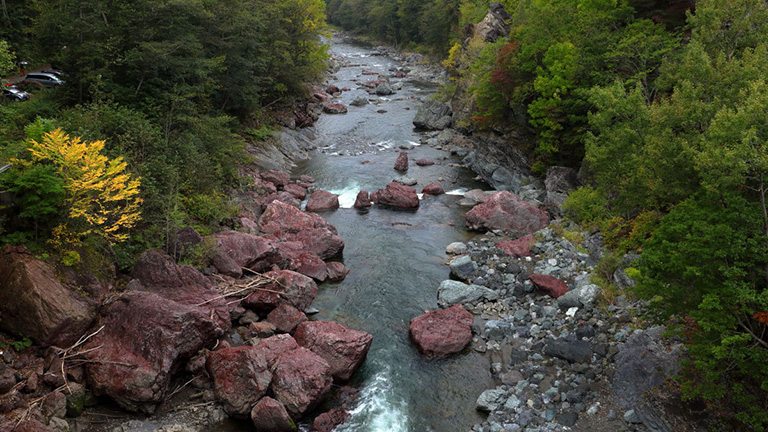
It is located in the village natural park of Shimukappu Village in the upper reaches of the Mukawa River and has a unique landscape of huge red and blue rocks. In autumn, when the leaves turn red, the maple trees, which are also the village’s trees, turn red and yellow, enhancing the scenery. In recent years, rafting on the Mukawa River has become popular, and the intensity of rafting after rainfall is among the highest in Hokkaido. It is also a popular spot for rock climbing.
It Is a Popular Scenic Spot That Can Be Enjoyed Even in Winter.
From December 1 to 25, a Period Exclusive Light-up Event at Night Is held!
【Hoshino Resorts TOMAMU】
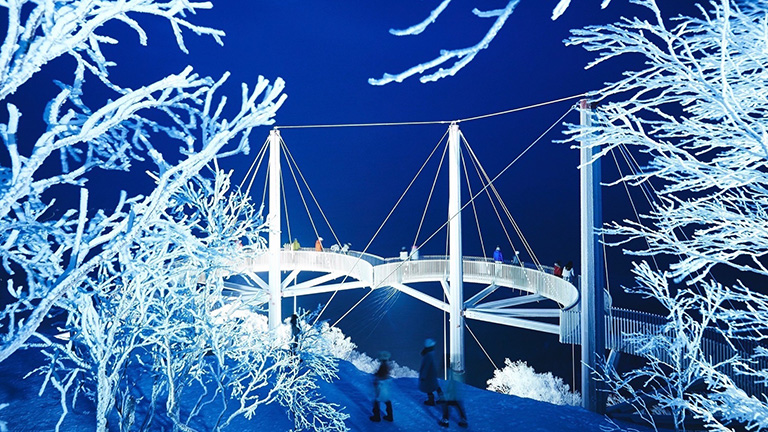
Hoshino Resorts TOMAMU is one of the largest resorts in Hokkaido, with ski resorts and hotels. From spring to autumn, you can enjoy a variety of outdoor activities such as rafting and canoeing. The spectacular view from the “Unkai Terrace,” a viewing spot located at an altitude of 1088 meters near the top of Mount Tomamu, is famous throughout Japan. In winter, it operates as the “Terrace of Frost Tree,” where you can enjoy the spectacular view of winter mountains, and from December 1 to 25, a light-up event at night is held!
(Photo provided by Hoshino Resorts TOMAMU)
Nakatomamu, Shimukappu Village, Yufutsu County, Hokkaido
TEL 0167-58-1111 (representative)
⇒Hoshino Resorts TOMAMU (external site)
Let’s Travel Along the Saru River!
What Kind of River is the Saru River?
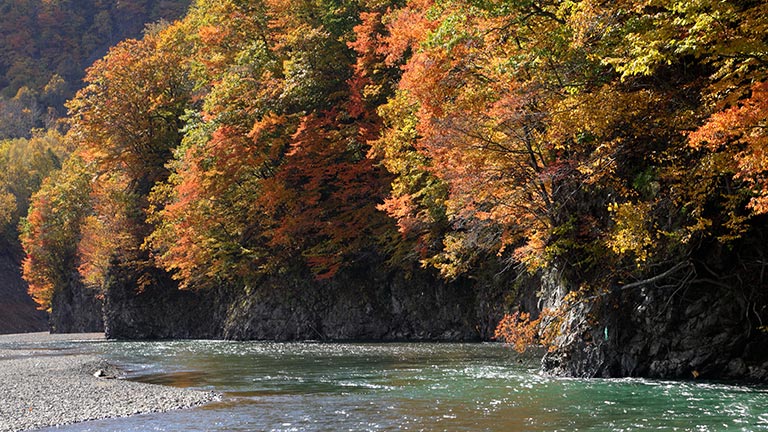
The Saru River flows through a valley surrounded by rich forests in the upper reaches and a rural area with farms and fields in the lower reaches. The area is closely related to the Ainu. There are many places where you can learn about the history of the river basin, such as the Nibutani Ainu Culture Museum and the Historical Museum of the Saru River.
Check out Kawatabi Hokkaido’s articles!
⇒[Rivers and dams in Hokkaido]Saru River
Check Out Must-See Sights of the Saru River Basin!
Popular Anime Characters Welcome You
It’s Sure to Be Instagrammable!
【Totoro tree】
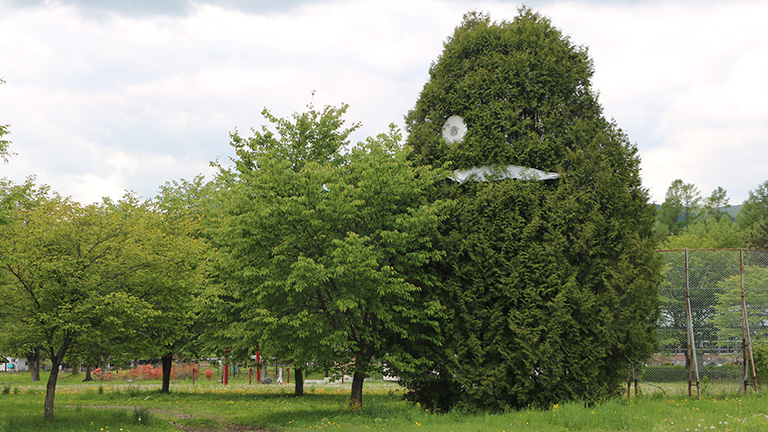
At the former site of Iwachishi Elementary School in the northern part of Biratori Town, a tree that looks just like the popular anime character Totoro welcomes tourists.
Click here for access information and contact details.
⇒Cuteness that makes you want to upload it to SNS!Totoro tree in Biratori town.
Biratori Town Is the Number One Tomato Producer in Hokkaido
The Town Also Has a Wide Variety of Processed Products That Are Full of Ideas and Ingenuity
【Biratori Tomato】
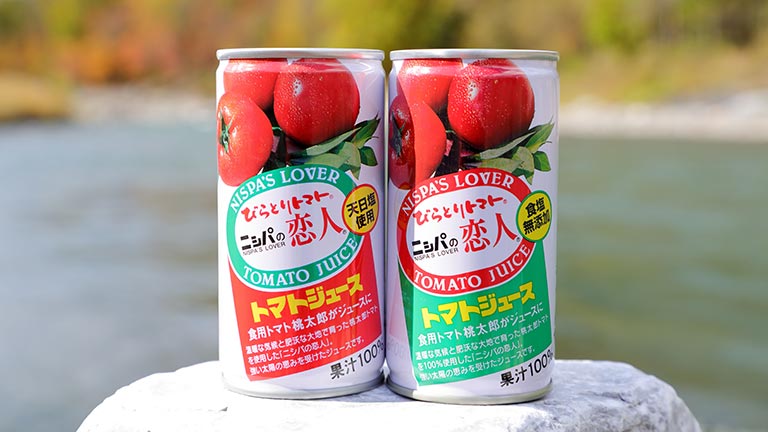
Biratori is the number one tomato-producing town in Hokkaido in terms of shipments. A variety of processed products using tomatoes are sold in the town.
Click here for access information and contact details.
⇒出荷量全道一!北海道の大地から真っ赤な夏トマト
A Former Passenger Car Turned Rider House!
A Must-See Spot for Railroad Fans
【Furenai Railway Memorial Museum】
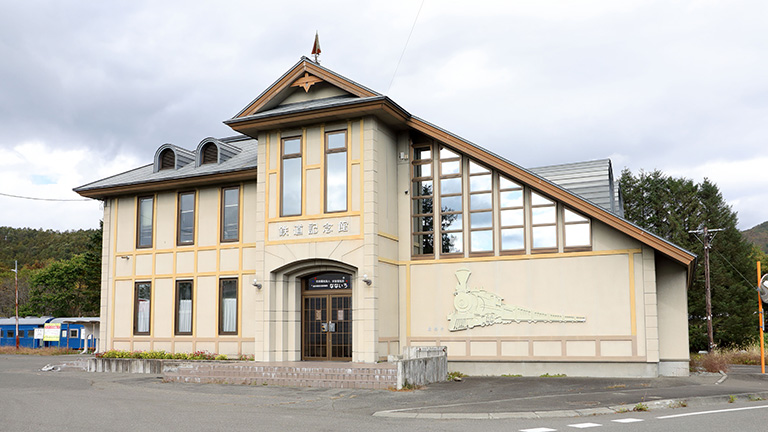

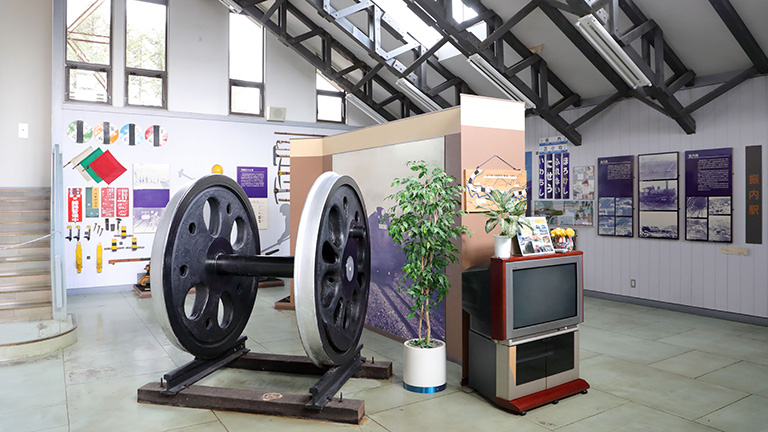
The museum displays models of Furenai Station, which used to be in Biratori Town and was closed in 1986, as well as railroad equipment and materials that tell the history of the former Japan National Railways Tomiuchi Line. In the adjacent Furenai Railway Memorial Park, steam locomotives D51 and passenger cars are on display, and the park can also be used as a simple accommodation facility (May to September)! It is popular among railroad fans traveling in Hokkaido.
Furenaicho, Bitori Town, Saru County, Hokkaido (next to Furunai Post Office)
TEL 01457-3-3211
⇒Biraitori Town Official Website: Furenai Railway Memorial Museum Page (external site)
There Are Many Valuable Ainu Cultural Materials on Display That Can Only Be Seen Here
【Nibutani Ainu Culture Museum】
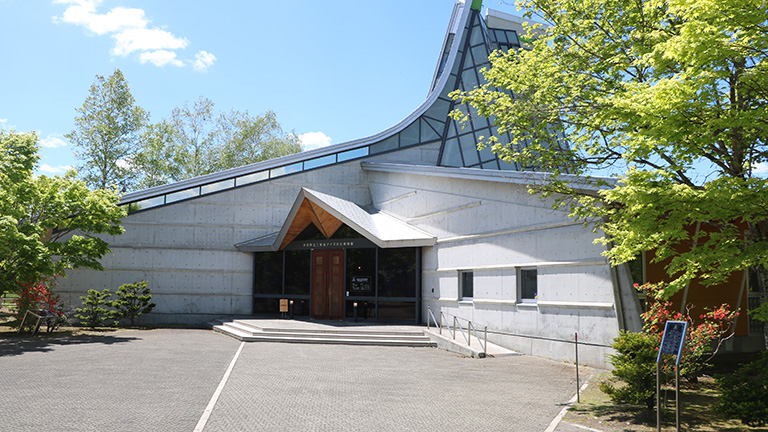
The concept of the museum is to pass on the precious Ainu culture to the future. The museum is designed to convey the Ainu lifestyle and culture based on the unity of human beings, gods, and nature (the earth), from different aspects. It allows visitors to enjoy it with full use of their sense of sight and hearing.
Click here for access information and contact details.
⇒アイヌ文化を学び、 体験できる平取町立 二風谷アイヌ文化博物館。
A Shrine With a Long History Related to the Legend of Yoshitsune
It’s Also Worth a Look as a Spot for Autumn Leaves!
【Yoshitsune Shrine】
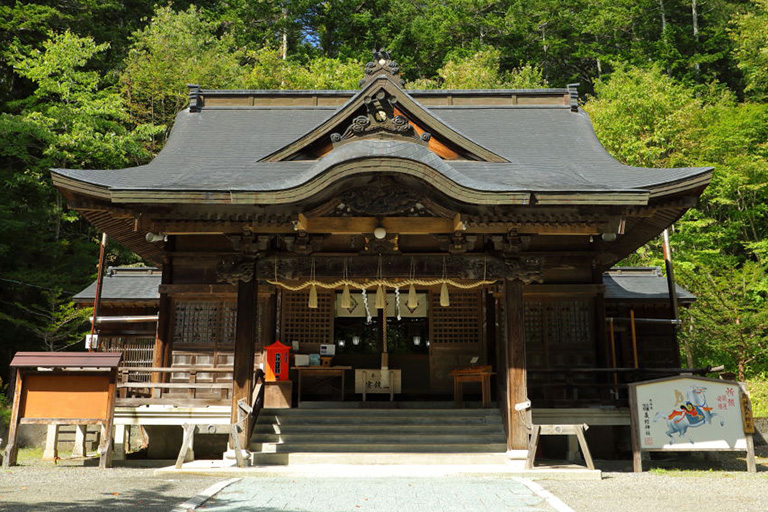
This is a shrine with a long history, starting with the enshrining of a statue of Yoshitsune in 1799 by Juzo Kondo and others who were ordered to explore Ezo. The precincts of the shrine and the adjacent Yoshitsune Park are well known for their autumn foliage. The museum on the premises exhibits materials related to Minamoto no Yoshitsune, a great man who left behind many legends in Hokkaido and who was known as “Hankan (judge) Kamui (god)” by the Ainu people.
119-1 Honcho, Biratori Town, Saru County, Hokkaido
TEL 01457-2-2432
⇒Biratori Town Official Website: Yoshitsune Shrine page (external site)
You May Be Able to See Salmon and Cherry Salmon Swimming Upstream the River!
Dam Cards Are Also Being Distributed.
【Nibutani Dam】
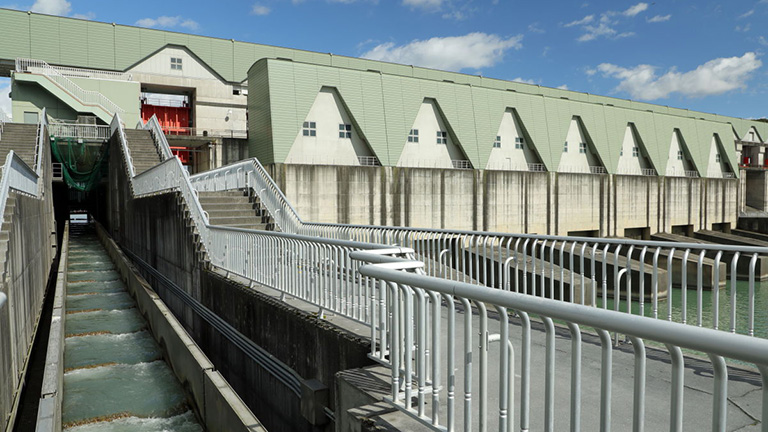
The Nibutani Dam is a multipurpose dam completed in 1997 for flood control and water utilization, located about 21 km from the mouth of the Saru River. It is the longest concrete gravity dam in Hokkaido, with a 550-meter crest length. At the Nibutani Family Land on the east side of Lake Nibutani, you can enjoy camping and outdoor sports such as tennis, park golf. Dam cards, popular among dam enthusiasts, are distributed. In autumn, salmon and cherry salmon can be seen on the fishway in the dam.
Click here for access information and contact details.
⇒[Rivers and dams in Hokkaido]Nibutani Dam
Watch the Powerful Horses up Close!
The Exciting Races Are Held Until Mid-November.
【Mombetsu Racecourse】

Mombetsu Racecourse is one of the largest local horse racing tracks, comparable to Oi Racecourse, and all races are held at night. The Polaris Dome, which is attached to the main grandstand, is equipped with a huge 310-inch screen, and you can watch horse races while enjoying local flavors at restaurants. Races are held until mid-November.
(Photo provided by PIXTA)
76-1 Tomikawa Komaoka, Hidaka Town, Saru County, Hokkaido
TEL 01456-2-4110
⇒Hokkaido Keiba (external site)
You May Be Able to See Some of the Famous Horses of the Past!
Let’s Visit the Home of Racehorses!
【Farm Tours】
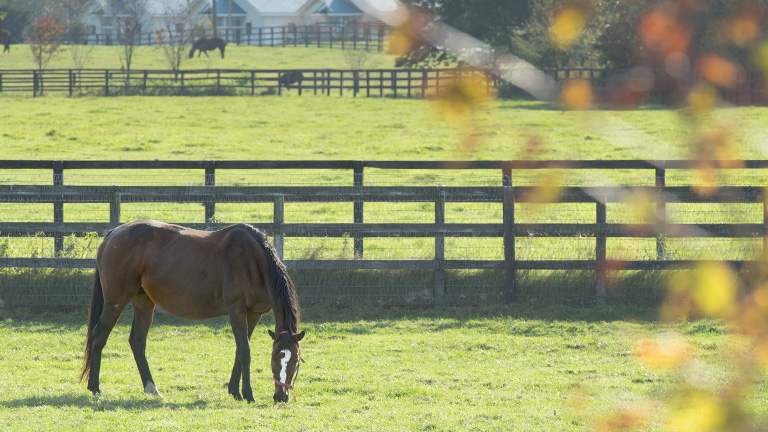
Some ranches in Hidaka Town, which is known as a racehorse production, offer tours of their ranches, where you can see the famous horses of the past who competed in races. The number of farms available for tours varies depending on the season, so please check the website below for the latest information.
(Photo provided by PIXTA)
Click here for access information and contact details.
⇒Kyosoba no furusato annaisho (external site)
Catching Raw Shishamo Smelt (for a Fee), a Sudareboshi Speed-Making Competition, and Many Other Unique Events!
【Mombetsu Shishamo Festival】
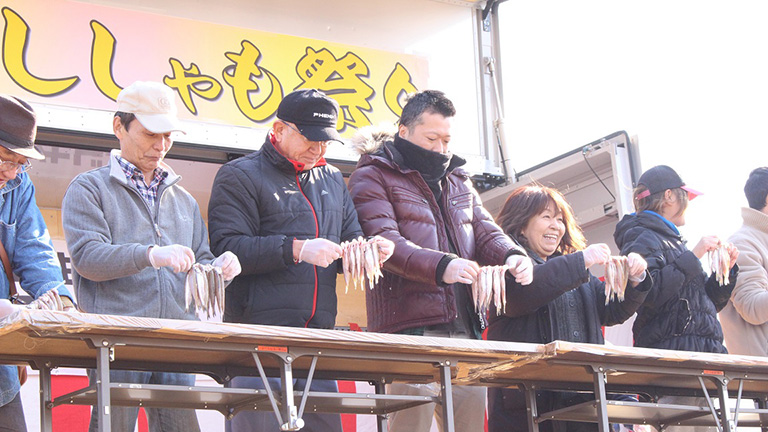
The annual “Mombetsu Shishamo Festival” is held every autumn in Hidaka Town (Mombetsu district) at the mouth of the Saru River. Hidaka’s shishamo has thick flesh and is popular as a gift at this time of year.
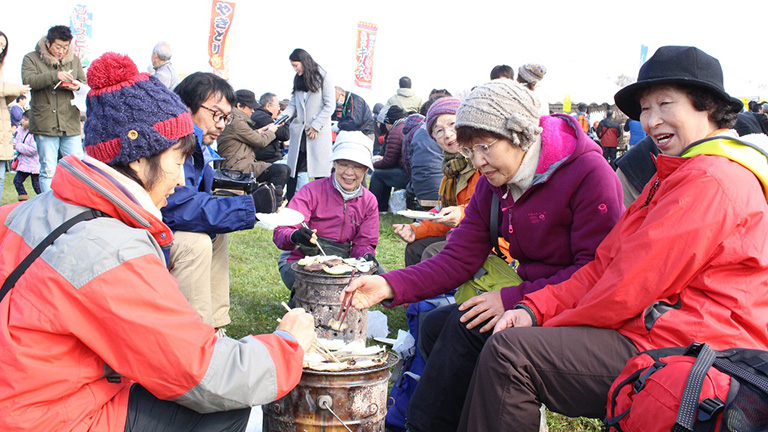
At the festival, shishamo smelt is offered at a discount from the market price. There are many unique events such as catching fresh shishamo (for a fee) and a contest to make sudareboshi as fast as possible!
Click here for access information and contact details.
Mombetsu Shishamo Festival executive committee Office
TEL 01456-2-6031
⇒Hidaka Town Official Website (external site)


